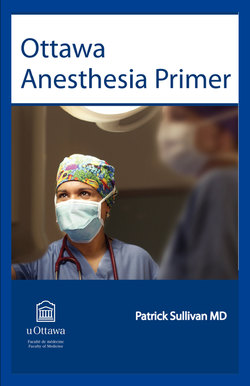Читать книгу Ottawa Anesthesia Primer - Patrick Sullivan - Страница 15
На сайте Литреса книга снята с продажи.
ОглавлениеHistory of Presenting Illness:
Anesthesiologists must be able to anticipate, avoid, and manage perioperative complications. These complications are specific to the proposed surgery and the patient’s coexisting medical problems. This chapter describes how to use an evaluation of the patient’s history, physical examination, and laboratory investigations to identify and avoid potential problems, assess the severity of the patient’s condition, and optimize the patient’s condition prior to surgery. The first step is to ask the patient to explain the reason for the surgery. Ascertain information about the nature of the problem; determine its severity and any therapeutic interventions that have been used. Careful consideration of the surgical procedure will determine the likelihood of significant blood loss, cardiorespiratory compromise, or unusual positioning requirements (i.e., prone, lateral, lithotomy, etc.). This information can also be useful in planning for venous access, specific monitoring, and choice of anesthetic technique.
Anesthetic History:
The patient undergoing anesthesia and surgery should be carefully questioned about any reaction to previous anesthetics, and information that the patient considers relevant should be documented. A review of the patient’s previous anesthetic records may provide additional information concerning any prior perioperative complications and may offer solutions to avoid similar problems in the future.
The patient should be asked about a family history of adverse anesthetic problems. Malignant hyperthermia and plasma cholinesterase deficiency are two such hereditary disorders that manifest under anesthesia (for further information, see Chapter 25: Unusual Anesthetic Complications).
Problem Identification:
Anesthetic drugs and techniques can have a profound effect on human physiology. The anesthesiologist uses the preoperative evaluation to identify medical conditions that may be adversely affected by the administration of anesthetic medications. Special attention is paid to symptoms and diseases related to the cardiovascular, respiratory, and neuromuscular systems as they will be directly influenced by the anesthetic medications. A systems-based review can be used to illicit additional relevant information. Ask the patient general screening questions directed at all major body systems, and then narrow the focus if the patient gives positive responses to any of the questions. This information can then be used to develop an appropriate “patient-specific” anesthetic plan.
When available, a recent preoperative evaluation may be used to guide the assessment. Even when the patient has been seen in a pre-assessment clinic, it is of paramount importance that anesthesiologists perform a final preanesthetic assessment to formulate their own assessment and plan. The final preoperative evaluation should include a review of the patient’s history, physical examination, and most recent investigations.
Optimization prior to surgery requires identifying the patient’s medical condition(s) and determining the severity and stability or progression of disease. Patients scheduled for elective surgery who have significant unstable symptoms may need to have their surgery postponed.
